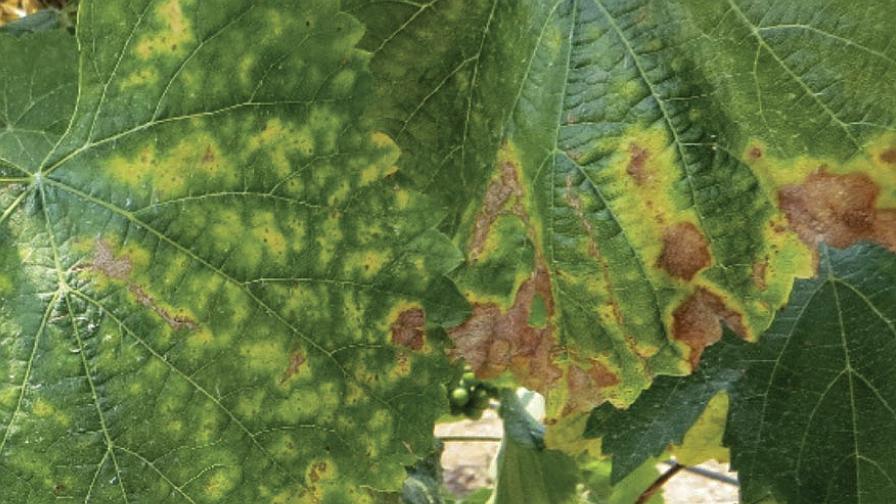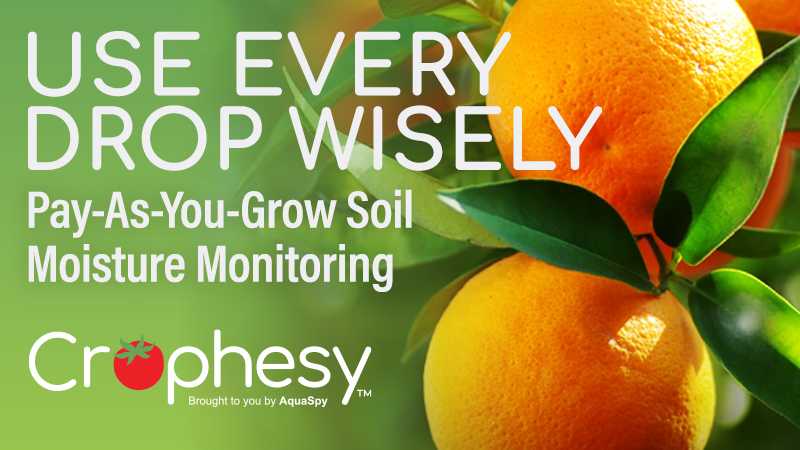Grape Growers Take on the Red Blotch Challenge
What should growers do to improve the quality of vines that are infected by grapevine red blotch virus (GRBV)? The answer to that question, according to Justin Tanner, is “not much,” at least with regard to crop thinning and increasing irrigation.
Tanner, a Post-Graduate Researcher in the Department of Viticulture and Enology at University of California, Davis, reached that conclusion upon conducting two trials during the 2021 growing season. The first mitigation study looked at the effect of crop level on GRBV-positive vines. The second focused on the effect of applied water amounts.
Weeks later, at the annual Winter Grape Day Conference at UC Davis, Tanner informed attendees that the impediment of carbon translocation seen in GRBV-positive plants is “very difficult to overcome with cultural practices.”
Tanner’s experiments were conducted on ‘Cabernet Sauvignon’ clone 7 on rootstock 110R that was planted in 2012. The soil type was bale silt loam. The vines were all grown in the vertical shoot training position (VSP).
CROP LEVEL MODIFICATION
Each test allowed for four possible replicated vines per treatment based on the combinations of vines either infected or not infected with GRBV, and either a full crop load level (45 clusters per vine) or a reduced crop load level (10 clusters per vine).
As follows, grapevines responded physiologically to reduced crop levels under GRBV positive and negative conditions:
• Stem water potential — Oddly, GRBV infection significantly improved water status; crop load had no significant effect.
• Leaf gas exchange — Neither virus status nor management of crop level had a significant effect on photosynthesis.
• Sugars in leaf and sap — GRBV infection resulted in 65% more sugars in leaves at the end of veraison and 65% less sugars in sap at mid-veraison. Meanwhile, the treatment of crop level had no significant effect on the sugar concentration of the sap.
• Yield components — Much like GRBV did not affect photosynthesis, it did not affect yield. However, with regard to crop level, removing clusters directly reduced yield, Tanner said. “There’s a highly significant influence with that.”
• Primary metabolism — At harvest there was no significant difference in berry weight and must pH among the four treatment groups. With regard to total soluble solids (TSS), GRBV-infected vines did boast 13% less sugars, although there was only a 1% difference between cluster thinning and untreated crop level.
• Secondary metabolism — GRBV-positive vines decreased the presence of anthocyanins in berry skins by 29%.
Tanner’s conclusion: “We don’t recommend cluster thinning for managing red blotch.”
“You can cut off the clusters,” he added. “It will significantly reduce your yield but will not bring the quality up to uninfected levels. We’ve also seen in the sugar analysis in leaf and sap that red blotch virus is severely impairing the translocation of carbohydrates, which was not palliated by cluster thinning.”
Tanner estimates that a full crop of 6.45 tons per acre would net nearly $31,000 per acre with GRBV infection and $46,400 per acre without GRBV infection. The same yield thinned by 1.35 tons per acre would net $6,400 per acre with GRBV infection and $9,700 without GRBV infection.
“Even with the price penalty for lower quality fruit, at least you’re getting a reasonable yield as red blotch is not affecting the yield,” Tanner said. “However, removing nearly a fifth of your fruit severely impacts the amount of fruit you’re going to produce.”
SAME STORY
A second 2-by-2 factorial experiment with GRBV-positive and -negative vines revolved around varied irrigation levels: 100% vs. 25% of crop evapotranspiration rate. And as had been the case with the crop level trial, the results did not endorse extra irrigation.
“Applying four times more water, and also applying four times less water, did not have a significant effect on the fruit quality as indicated by the Brix and total anthocyanin content,” Tanner said.
All told, “applying more water or modifying the crop level did not bring the total soluble solids or sugar levels up to uninfected levels,” Tanner concluded. “The same with anthocyanin production.”











